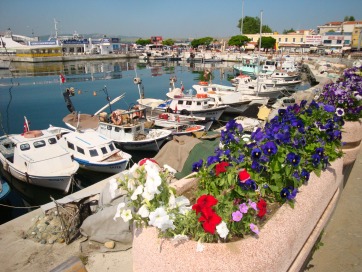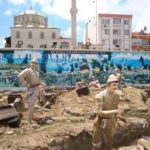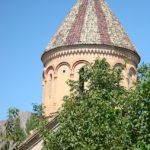Population: 31,800
Old name: Kallipolis/Callipolis
Favourite son: Piri Reis (mapmaker)
What foreigners refer to as the Gallipoli Pensinsula and Turks call the Gelibolu Yarımadası is a thin strip of land which extends from Thrace all along the Dardanelles until it joins the Aegean. Most people come this way to get to Çanakkale by land, driving along this peninsula to the dusty small town of Eceabat where they take a ferry across the Dardanelles.
As you head south along the Gallipoli Peninsula you quickly come to the small town of Gelibolu from which it takes its Turkish name near the mouth of the Dardanelles. In 1354 this was the first town on the European continent to fall to the Ottomans, led by Orhan Gazi.
For much of the year Gelibolu snoozes peacefully. Then around ANZAC Day (25 April) it awakes with a start to find all its hotel rooms full. As Çanakkale has become more popular as a place for Turks to visit so Geiibolu has started to spruce itself up a bit to soak up some of the surplus capacity.
Gallipoli? Gelibolu?
Every year some visitors get muddled up and hop out of their buses here assuming they have reached their destination. In fact Gelibolu is some 35 km north of the battlefield sites. It’s still worth taking a short break here, however, because it’s a somewhat underrated town that boasts a very pretty fishing harbour that looks as if it has somehow come adrift from Aegean or Mediterranean moorings.
Around town
Overlooking the harbour is a stolid stone tower that once formed part of a Byzantine fort protecting the ancient town of Kallipolis. If you find the tower open it contains a somewhat half-hearted museum in memory of Piri Reis (c.1465-1555), a Turkish admiral and map-maker, born in Gelibolu, who produced the first Turkish map to show the American continent in its entirety.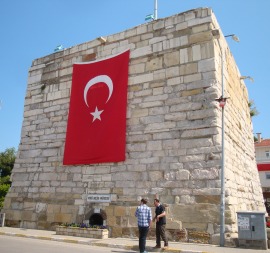 The map, drawn in 1513 for inclusion in his Kitab-i-Bahriye (Book of the Sea), was discovered in the Topkapı Palace in İstanbul in 1929 and has attracted considerable interest ever since.
The map, drawn in 1513 for inclusion in his Kitab-i-Bahriye (Book of the Sea), was discovered in the Topkapı Palace in İstanbul in 1929 and has attracted considerable interest ever since.
Although Piri Reis spent many years at sea, he certainly didn’t visit everywhere shown on his maps. Instead, his representation of the Americas is assumed to have been taken from charts drawn up by Christopher Columbus that fell into his uncle’s hands when he captured a Spanish galleon off Valencia. In 1525 Piri Reis’ book was presented to Sultan Süleyman the Magnificent as a gift, which is presumably how it ended up at Topkapı. Visitors to the Tower in Gelibolu have to make do with inspecting reproductions of it.
Down on the shore a statue of Piri Reis shows the admiral staring out to sea. Inland from it is the small Gallipoli War Museum (closed Sundays and Mondays) fenced round with sandbags. Cut inland to find the İskele Cami (1559) tucked up with some fine old wooden houses for company.
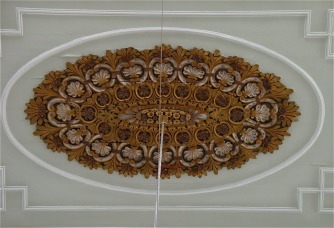 Right in the centre of town uphill behind the tower is the Gazi Süleyman Paşa Cami which dates back to 1385 but was completely rebuilt in the 19th century with an elongated lantern on the roof where the dome would normally be that lets lots of light into the impressive interior. Many of the outdoor columns include pieces of masonry that must have come from ancient Kallipolis.
Right in the centre of town uphill behind the tower is the Gazi Süleyman Paşa Cami which dates back to 1385 but was completely rebuilt in the 19th century with an elongated lantern on the roof where the dome would normally be that lets lots of light into the impressive interior. Many of the outdoor columns include pieces of masonry that must have come from ancient Kallipolis.
Beyond Gelibolu Town
Gelibolu’s other sights are scattered along the road south to Hamzakoy, a sandy cove with a couple of pleasant places to eat.
Firstly you will come to the shrine of Ahmet-i Bican Efendi, with, behind it, the mosque and shrine of Mehmed-i Bican Efendi (d. 1453). His is not a name likely to roll off many Western tongues. However, in Turkey he is revered as the author of a commentary on the Koran called the Muhammadiye.
Keep walking downhill until you reach the mosque-sized tomb of Hallac-ı Mansur about whom nothing seems to be known despite his obvious importance.
If you turn right along Fener Yolu you’ll come to the astonishing tomb of Bayraklı Baba (Flag Father). This is completely covered in Turkish flags which commemorate a rather gruesome story dating back to 1410. At that time one Karaca Bey was serving in the Ottoman army as a standard-bearer. Reluctant to let the enemy capture his flag, he cut it into pieces and swallowed them.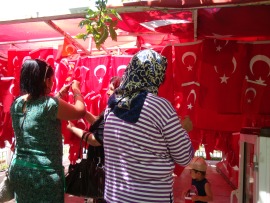 That sounds bad enough but then when his friends doubted what he said, Karaca Bey sliced open his own stomach to reveal the half-digested pieces of flag inside.
That sounds bad enough but then when his friends doubted what he said, Karaca Bey sliced open his own stomach to reveal the half-digested pieces of flag inside.
If you keep going along the road you will come to the Azebler Namazgah, a rare example of an open-air prayer arena built in 1407; its marble mimber and mihrab give it a vaguely Mughal appearance.
Near here you can also wander around the French Cemetery which contains the remains of soldiers who died in the Crimean War and of Senegalese soldiers who died in the Gallipoli disaster. Beside it is the tomb of Sarıca Paşa who established Gelibolu’s first shipyard in 1391.
If you walk down to Hamzakoy beach and follow it to the far side you should eventually find the two-storied tomb of Sinanpaşa, the son-in-law of Sultan Bayezıd II that wouldn’t look out of place in İstanbul. Nearby is the tomb of Emir Ali Baba, a 14th-century admiral who captured Imralı island in the Sea of Marmara to which he gave his name in corrupted form.
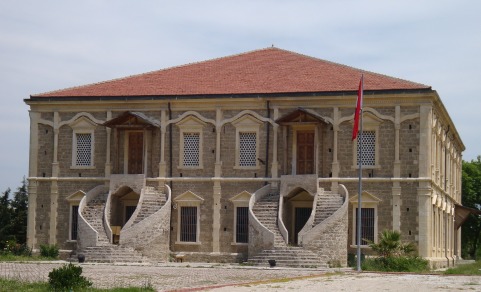
If instead of turning down Fener Yolu or going down to the beach you head inland from the Hallac-ı Mansur tomb you will come eventually to a magnificent Mevlevihane with a double staircase mounting its facade. It’s said to be the largest such lodge in the world.
Eating
If you decide to stay in Gelibolu you might like to eat in one of the picturesque harbourside fish restaurants. There’s not much to choose between them, especially as musicians wend an indiscriminate way around them offering alfresco entertainment. But the setting is delightful and you might want to tackle a plate of fresh sardines (sardalya), these being a particular speciality of Gelibolu.
Sleeping
Butik Hotel Gelibolu. Tel: 0286-566 6600
Hotel Oya. Tel: 0286-566 0392
Hotel Öztürk. Tel: 0286-566 6021
Otel Hamzakoy. Tel: 0286-566 8080
Transport info
Buses from İstanbul to Çanakkale used to pass through Gelibolu but may no longer do so since the opening of the Çanakkale 1915 Bridge. Alternatively, you can take the fast ferry to Bandırma and then a bus to Lapseki where a ferry operated by Gestaş crosses to Gelibolu. This was the timetable in 2013: https://www.gdu.com.tr/
Day trip destinations
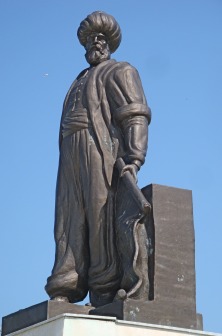 Statue of map-making admiral Piri Reis
Statue of map-making admiral Piri Reis 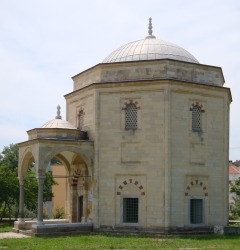 Tomb of Sinanpaşa
Tomb of Sinanpaşa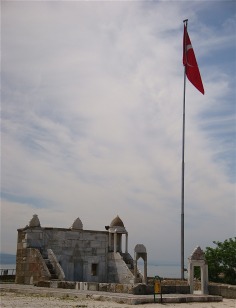 Coastal namazgah
Coastal namazgah
